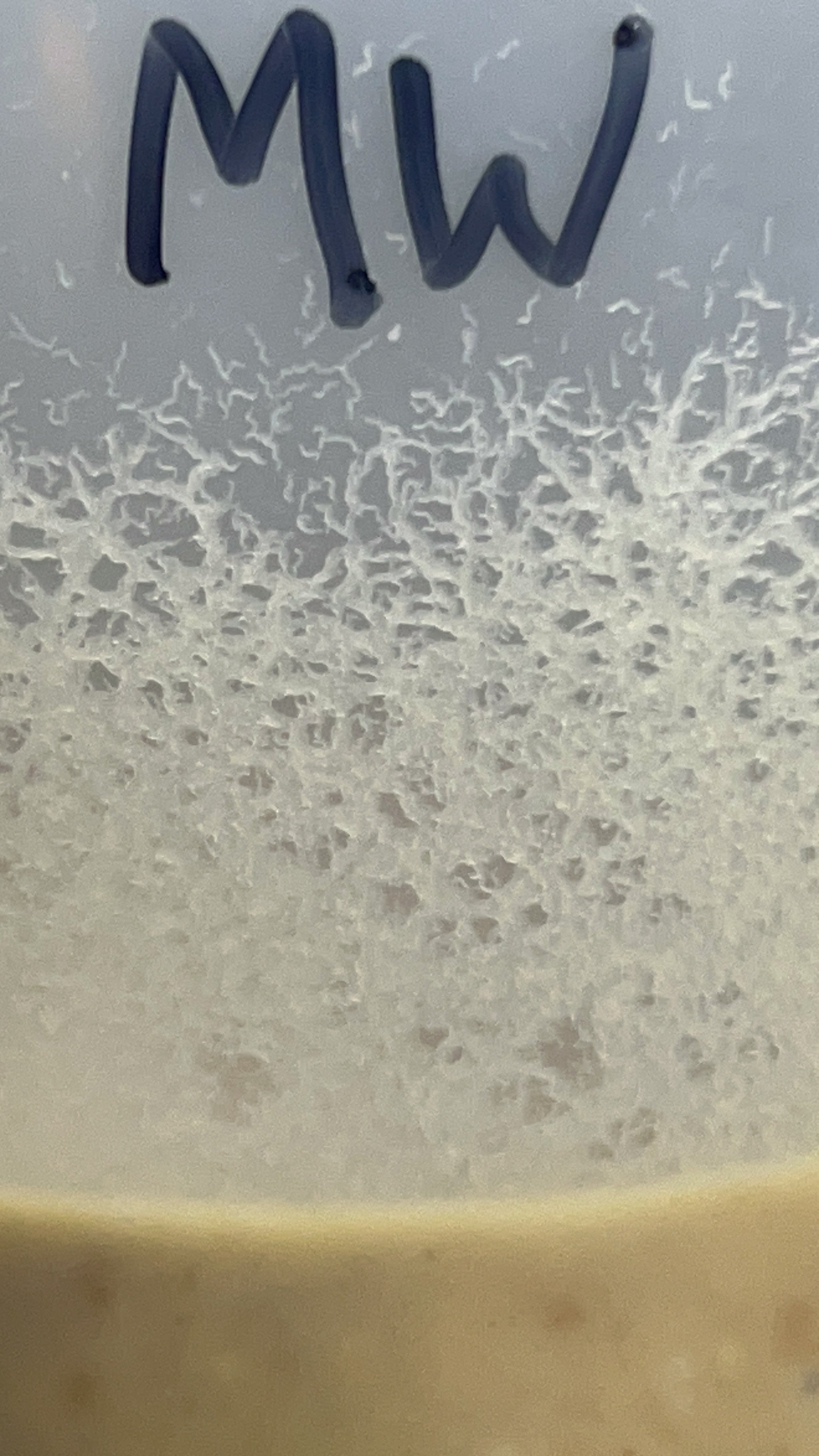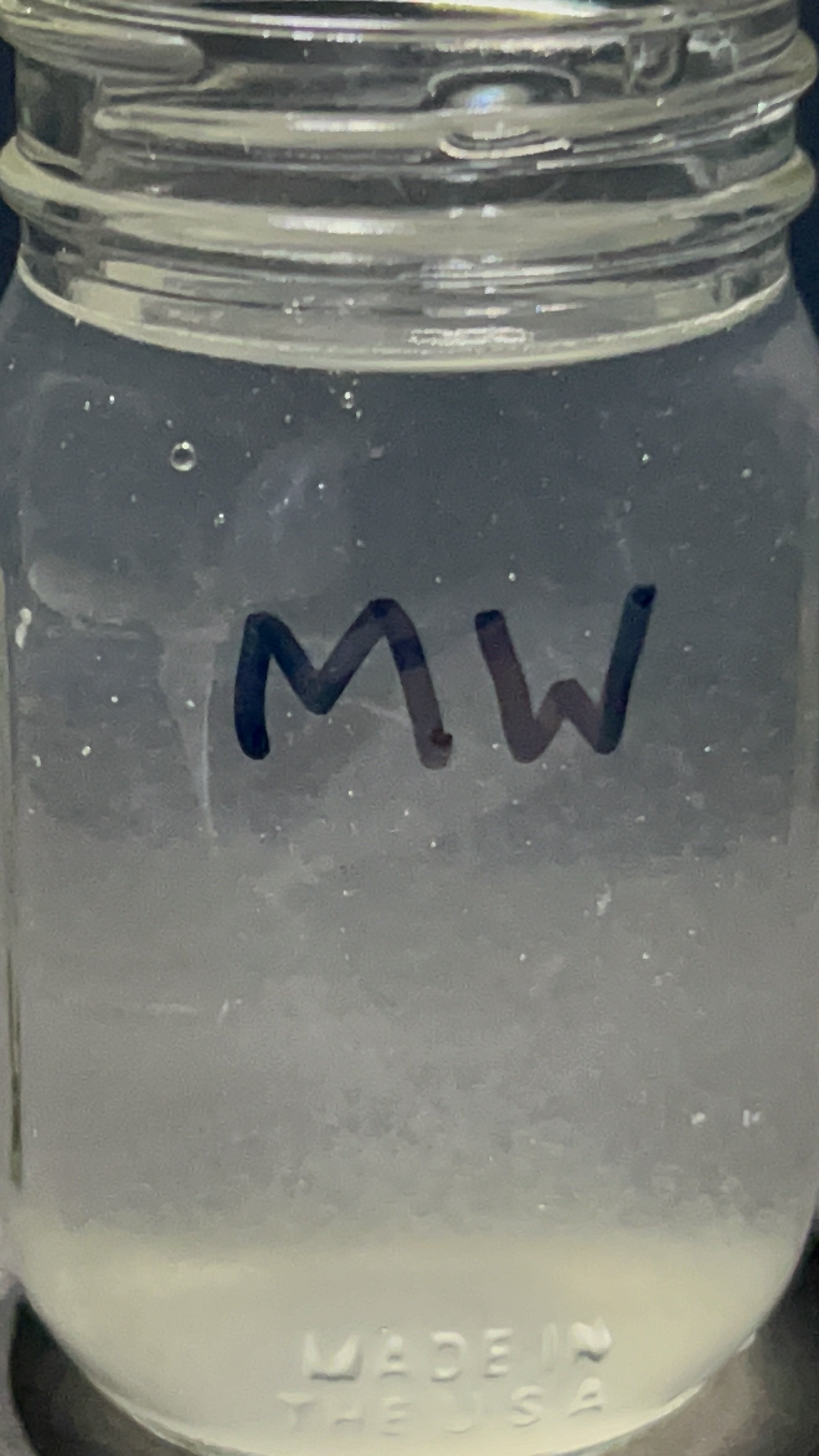 Image 1 of 2
Image 1 of 2

 Image 2 of 2
Image 2 of 2



Micro Worm in Oat Media +12 oz
Microworms (Panagrellus redivivus) are a nutrient-dense live food source perfect for newly hatched fish fry such as bettas, guppies, killifish, gouramis, and other small-mouthed species. These tiny nematodes are easy to culture, reproduce quickly, and provide a protein-rich diet that promotes fast, healthy fry growth during their most vulnerable stages.
This 12-oz live culture comes in a nutritious oatmeal-based medium teeming with active microworms ready to feed or propagate. Microworms stay alive on solid surfaces and drift slowly in the water column, encouraging fry to feed naturally throughout the day. It is ideal for breeders, hobbyists, and aquatics programs.
Ideal For:
Bettas, killifish, gouramis, rainbowfish fry
Breeding projects requiring tiny live food
Low-maintenance, shelf-stable fry food solution
Storage & Conditions:
Container: Transfer to a clean plastic container (taller is better)
Temperature: Room temperature (50°F–78°F / 10°C–25°C)
Lighting: Indirect light is fine; avoid direct sunlight or extreme heat.
Air: Culture needs air exchange – keep the lid loose or use a breathable cover.
Feeding & Maintenance:
When production slows after 1–3 weeks, refresh the media by discarding half of the culture (it can be used to create a new culture or discarded in the trash).
Add oat media and dry activated yeast.
How to Harvest & Feed:
Scrape worms from the sides of the container using a cotton swab, paint brush, or finger.
Rinse into a small cup with dechlorinated water or use directly.
Drop into the fry tank—These worms are small and sink slowly. They survive in an aquarium for 2 to 6 hours.
Feed the culture with yeast after harvesting.
To start a new culture:
Prepare the Oat media by soaking organic oats in dechlorinated water for 12 hours.
Spread hydrated oats (~1/4 inch thick) in a clean plastic container.
Add one teaspoon of dry activated yeast.
Transfer a scoop of the old culture as a starter.
Store at room temperature.
Worms are sorted by size from smallest to largest, and by their characteristics.
Vinegar Eels: These are the smallest in my store. They are free-swimming worms that can swim at the water's surface.
Walter Worms: These worms are small and sink slowly. They survive in an aquarium for 2 to 6 hours.
Micro Worms: Another type of small worm, these also sink and survive 2 to 6 hours in the aquarium.
Banana Worms (Large variety): These small worms sink quickly and survive in an aquarium for 2 to 6 hours.
Microworms (Panagrellus redivivus) are a nutrient-dense live food source perfect for newly hatched fish fry such as bettas, guppies, killifish, gouramis, and other small-mouthed species. These tiny nematodes are easy to culture, reproduce quickly, and provide a protein-rich diet that promotes fast, healthy fry growth during their most vulnerable stages.
This 12-oz live culture comes in a nutritious oatmeal-based medium teeming with active microworms ready to feed or propagate. Microworms stay alive on solid surfaces and drift slowly in the water column, encouraging fry to feed naturally throughout the day. It is ideal for breeders, hobbyists, and aquatics programs.
Ideal For:
Bettas, killifish, gouramis, rainbowfish fry
Breeding projects requiring tiny live food
Low-maintenance, shelf-stable fry food solution
Storage & Conditions:
Container: Transfer to a clean plastic container (taller is better)
Temperature: Room temperature (50°F–78°F / 10°C–25°C)
Lighting: Indirect light is fine; avoid direct sunlight or extreme heat.
Air: Culture needs air exchange – keep the lid loose or use a breathable cover.
Feeding & Maintenance:
When production slows after 1–3 weeks, refresh the media by discarding half of the culture (it can be used to create a new culture or discarded in the trash).
Add oat media and dry activated yeast.
How to Harvest & Feed:
Scrape worms from the sides of the container using a cotton swab, paint brush, or finger.
Rinse into a small cup with dechlorinated water or use directly.
Drop into the fry tank—These worms are small and sink slowly. They survive in an aquarium for 2 to 6 hours.
Feed the culture with yeast after harvesting.
To start a new culture:
Prepare the Oat media by soaking organic oats in dechlorinated water for 12 hours.
Spread hydrated oats (~1/4 inch thick) in a clean plastic container.
Add one teaspoon of dry activated yeast.
Transfer a scoop of the old culture as a starter.
Store at room temperature.
Worms are sorted by size from smallest to largest, and by their characteristics.
Vinegar Eels: These are the smallest in my store. They are free-swimming worms that can swim at the water's surface.
Walter Worms: These worms are small and sink slowly. They survive in an aquarium for 2 to 6 hours.
Micro Worms: Another type of small worm, these also sink and survive 2 to 6 hours in the aquarium.
Banana Worms (Large variety): These small worms sink quickly and survive in an aquarium for 2 to 6 hours.
